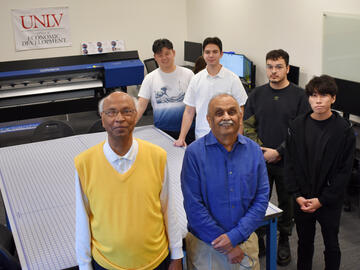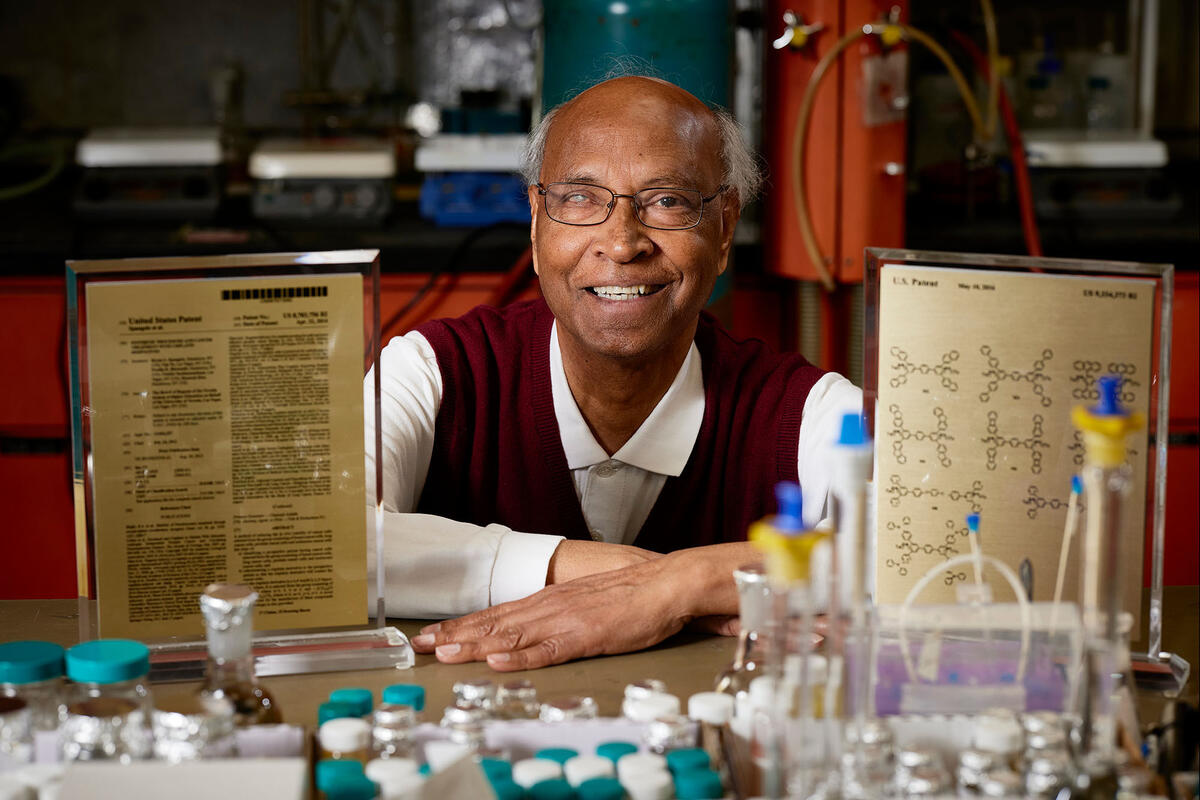Nevada has a lot riding on lithium, a key component in the high-tech batteries that make the 21st century go.
Thousands of workers manufacture lithium-ion batteries at the Gigafactory near Reno. A nearly $4 billion company based in Carson City recycles and repurposes old batteries. On the horizon, a mine proposed near the Oregon border could match the rest of the world’s current annual lithium output.
McKinsey & Co. consultants say lithium demand growth is expected to resemble “a hockey stick,” likely doubling twice between now and the end of the decade. Lithium, the lightest metal in the periodic table, has high electrochemical potential, making it an ideal component for the rechargeable batteries in everything from EVs to laptops to electric toothbrushes.
"Nevada's lithium potential is vast, and with the right investments, physical infrastructure, academic research, and government policies in place, the state economy could be transformed,” says Michael Mosher, director of commercialization with the UNLV office of economic development. “We can leverage lithium’s growing importance globally to bring new jobs and opportunities to our state.”
One factor slowing more-rapid lithium-ion battery adoption is the small but real risk of fire. A failing battery cell or an external shock such as a collision can ignite fires that are difficult to extinguish and can release toxic chemicals.
UNLV ingenuity is addressing that hazard, with a polymer invented on campus playing an important role in developing battery cases that reduce fire risk. The state's Battle Born Venture program provided pre-seed funding to Quantum Copper, a Las Vegas startup based in the UNLV Black Fire building that makes use of the battery-safety technology invented by Pradip Bhowmik, a longtime UNLV organic and polymer chemistry professor.
Bhowmik’s 2016 discovery makes polymers more fire resistant without the use of halogenated compounds such as chlorine and bromine, which retard fires but can be harmful to the environment and are difficult to dispose of safely.
Quantum Copper uses Bhowmik's polymer as a component of next-generation materials for energy storage devices such as batteries and supercapacitors. The company is in the final stages of developing and bringing to market products to create safer and more-fire-resistant battery casings, separators, anodes, and current collectors.
Serial entrepreneur Rahul Harkawat, Quantum Copper’s founder and CEO, became aware of Bhowmik’s technology while a participant in UNLV’s Technical Advisory Committee. The committee showcases the latest university intellectual property to interested outsiders, typically business people like Harkawat looking for ideas to bring to market.
“From being introduced to professor Bhowmik’s work, to negotiating a fair agreement to make use of the technology, to the support shown by the Governor’s Office of Economic Development, we’ve seen UNLV and the state of Nevada be with us every step of the way,” Harkawat says.
The Knowledge Fund works to spur laboratory-to-market activities at UNLV, UNR, and the Desert Research Institute as well as to identify technologies already developed by faculty, as is the case with Bhowmik’s research, and turning them into market opportunities via licensing or through the creation of a spinout company.
“GOED has been working for many years to create a complete continuum from technology creation and/or identification at the research universities through to standing up programs to support the resulting spinout companies with crucial pre-seed stage funding”, says Karsten Heise, GOED’s senior director of strategic programs and innovation, who has led the Knowledge Fund since its launch a decade ago.
Harkawat, who recently was named a UNLV Entrepreneur in Residence, says the $75,000 Knowledge Fund award to UNLV provides a modest but vital contribution to the product development process. He now expects to bring the new battery case design to market within the next 12 months, several months earlier than had been planned.
“This process worked as it was designed,” says UNLV Associate Vice President for Economic Development Zach Miles. “UNLV’s outreach to the community brought our research to the attention of an entrepreneur who put in the work to earn support from the Governor’s Office of Economic Development. We’re a small state, but if we focus our attention and pull together, big things can happen.”
‘Embrace’ of Entrepreneurship
UNLV and the Desert Research Institute recently introduced Quantum Copper founder and CEO Rahul Harkawat as an "Entrepreneur in Residence" for 2023.

Harkawat’s company uses polymer technology developed at UNLV to create safer lithium-ion battery cases for electric vehicles. Prior to starting Quantum Copper two years ago, Harkawat founded companies across the globe in various industries such as software, mobile communication, and medical technology. He also has assisted universities in Asia and North America in commercializing their research.
“Few universities boast a world-class laboratory and accelerator like Black Fire Innovation on the Harry Reid Research and Technology Park campus, and few communities embrace entrepreneurs the way Las Vegas does — and I’m proud to be associated with both,” said Harkawat, who runs Quantum Copper out of the Black Fire building in southwest Las Vegas.
As entrepreneur in residence, Harkawat will share his expertise and lessons learned as part of Nevada’s booming lithium economy, with the goal of creating a center of excellence to advance the state’s leadership role in lithium mining, manufacturing and recycling.
“Rahul’s years of experience innovating and incubating an impressive range of diverse companies make him an ideal entrepreneur in residence,” says Zach Miles, associate vice president of economic development. “This reflects our evolving new mission at UNLV to be an easy place to work with — and indeed, to build the technologies and companies of the future with students, faculty, and entrepreneurs together in our Black Fire sandbox."
The entrepreneur in residence position is funded by a grant from the Governor’s Office of Economic Development.



